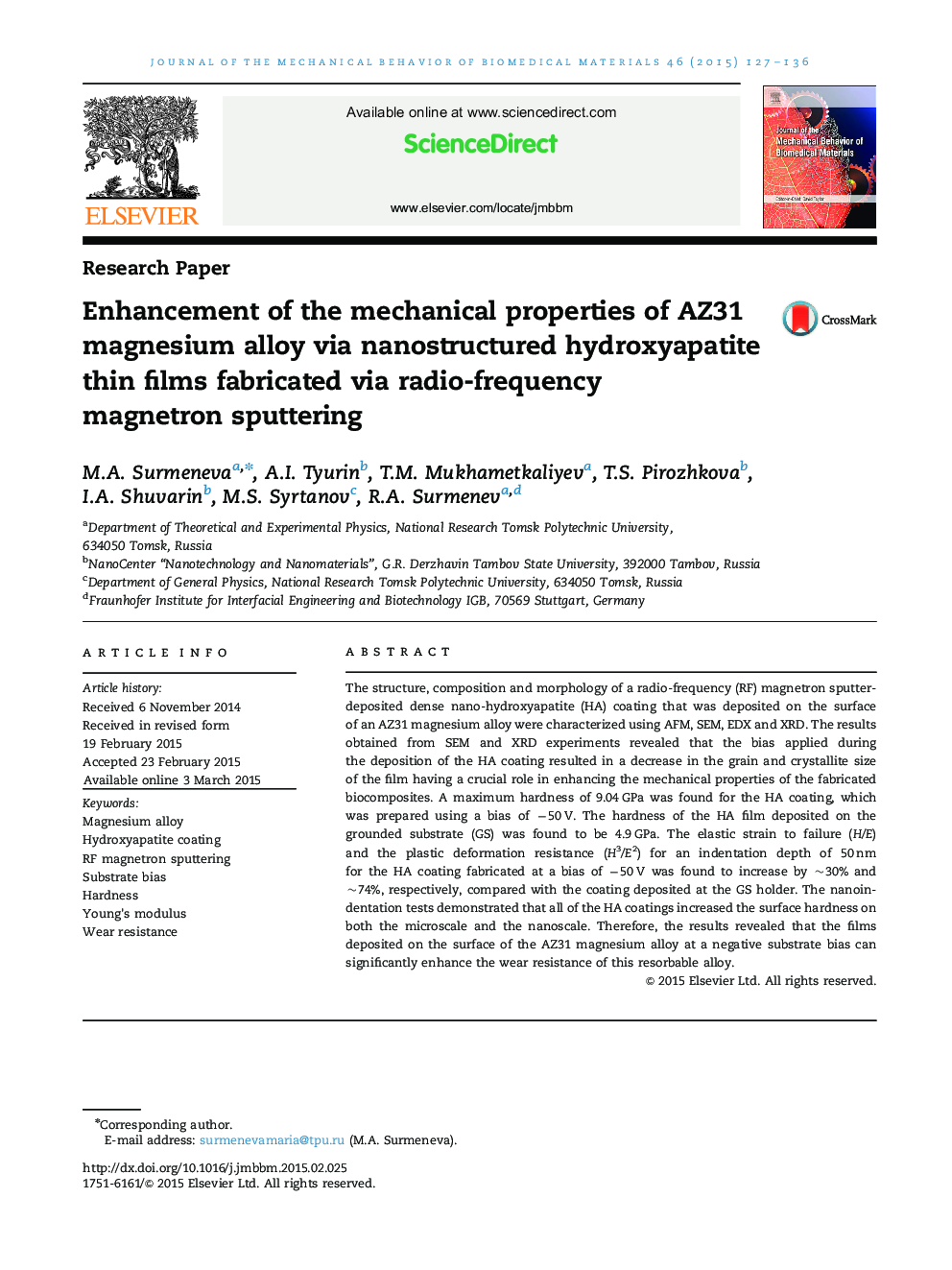| Article ID | Journal | Published Year | Pages | File Type |
|---|---|---|---|---|
| 810624 | Journal of the Mechanical Behavior of Biomedical Materials | 2015 | 10 Pages |
•The hydroxyapatite films increased the hardness on the microscale and nanoscale.•The substrate bias resulted in a decrease in the crystallite size of the coating.•The coating significantly enhanced the wear resistance of the AZ31 alloy.•Maximum hardness was found for the HA coating prepared using a negative bias.
The structure, composition and morphology of a radio-frequency (RF) magnetron sputter-deposited dense nano-hydroxyapatite (HA) coating that was deposited on the surface of an AZ31 magnesium alloy were characterized using AFM, SEM, EDX and XRD. The results obtained from SEM and XRD experiments revealed that the bias applied during the deposition of the HA coating resulted in a decrease in the grain and crystallite size of the film having a crucial role in enhancing the mechanical properties of the fabricated biocomposites. A maximum hardness of 9.04 GPa was found for the HA coating, which was prepared using a bias of −50 V. The hardness of the HA film deposited on the grounded substrate (GS) was found to be 4.9 GPa. The elastic strain to failure (H/E) and the plastic deformation resistance (H3/E2) for an indentation depth of 50 nm for the HA coating fabricated at a bias of −50 V was found to increase by ~30% and ~74%, respectively, compared with the coating deposited at the GS holder. The nanoindentation tests demonstrated that all of the HA coatings increased the surface hardness on both the microscale and the nanoscale. Therefore, the results revealed that the films deposited on the surface of the AZ31 magnesium alloy at a negative substrate bias can significantly enhance the wear resistance of this resorbable alloy.
